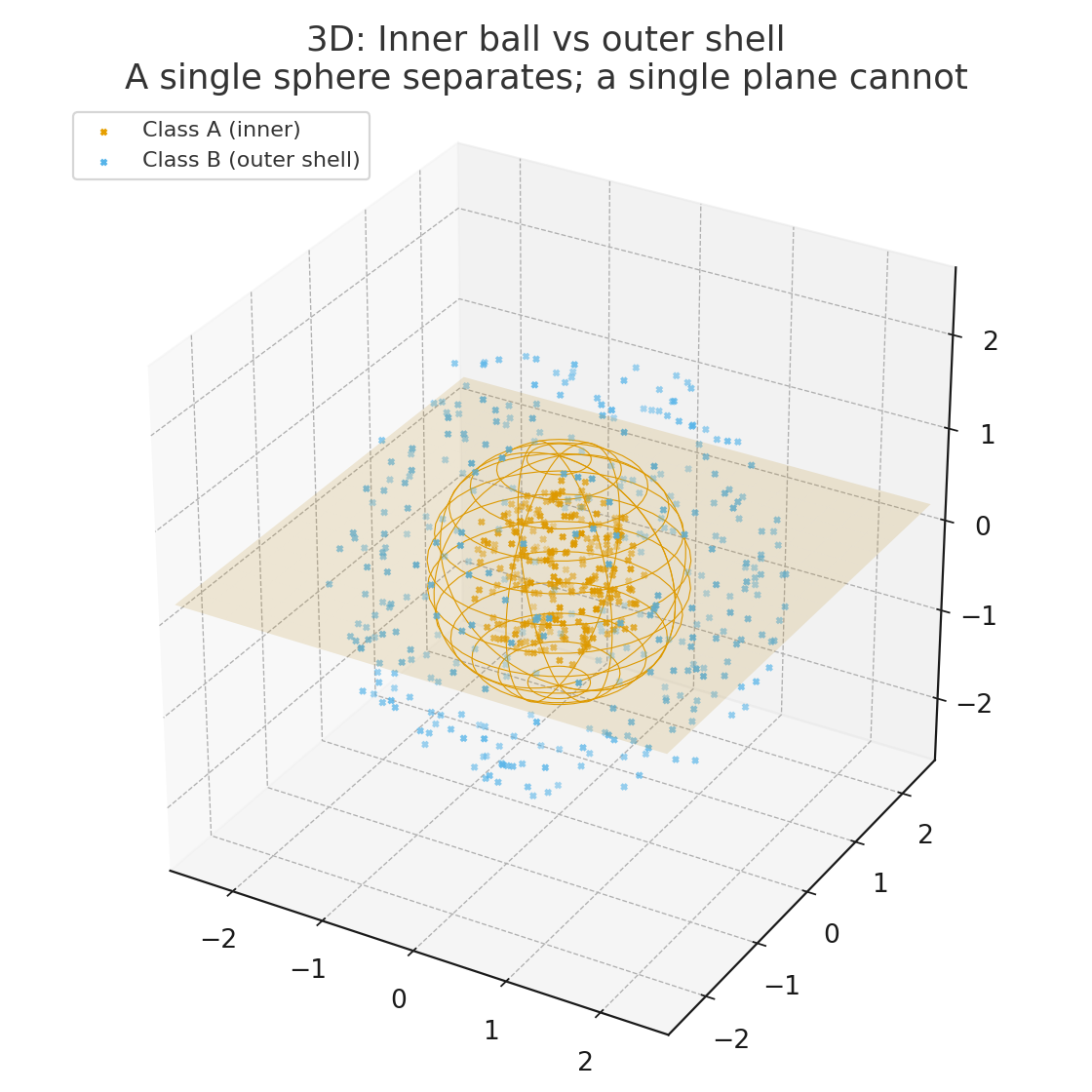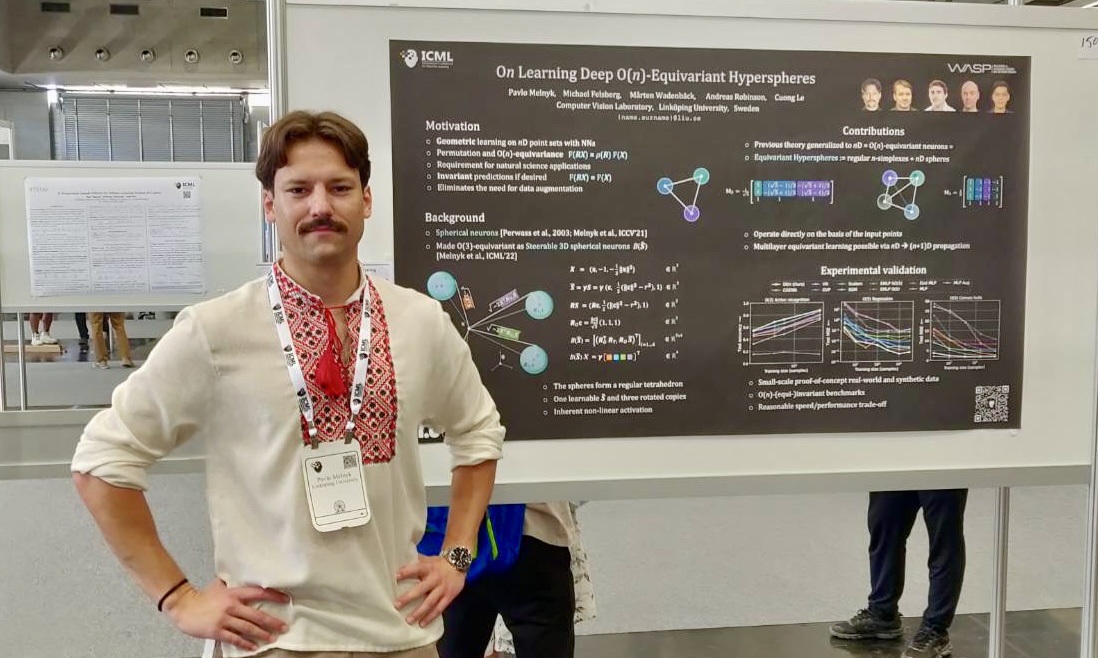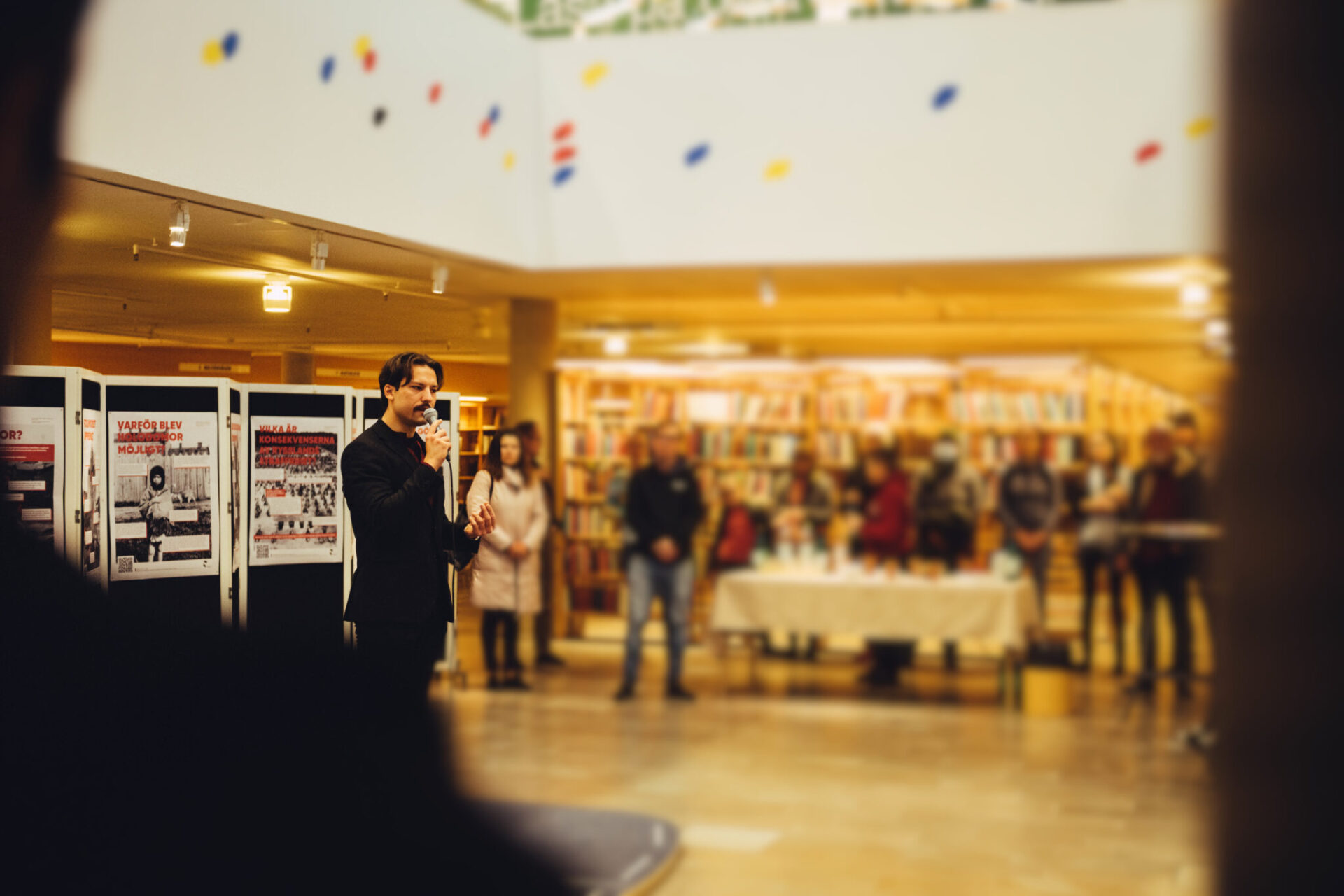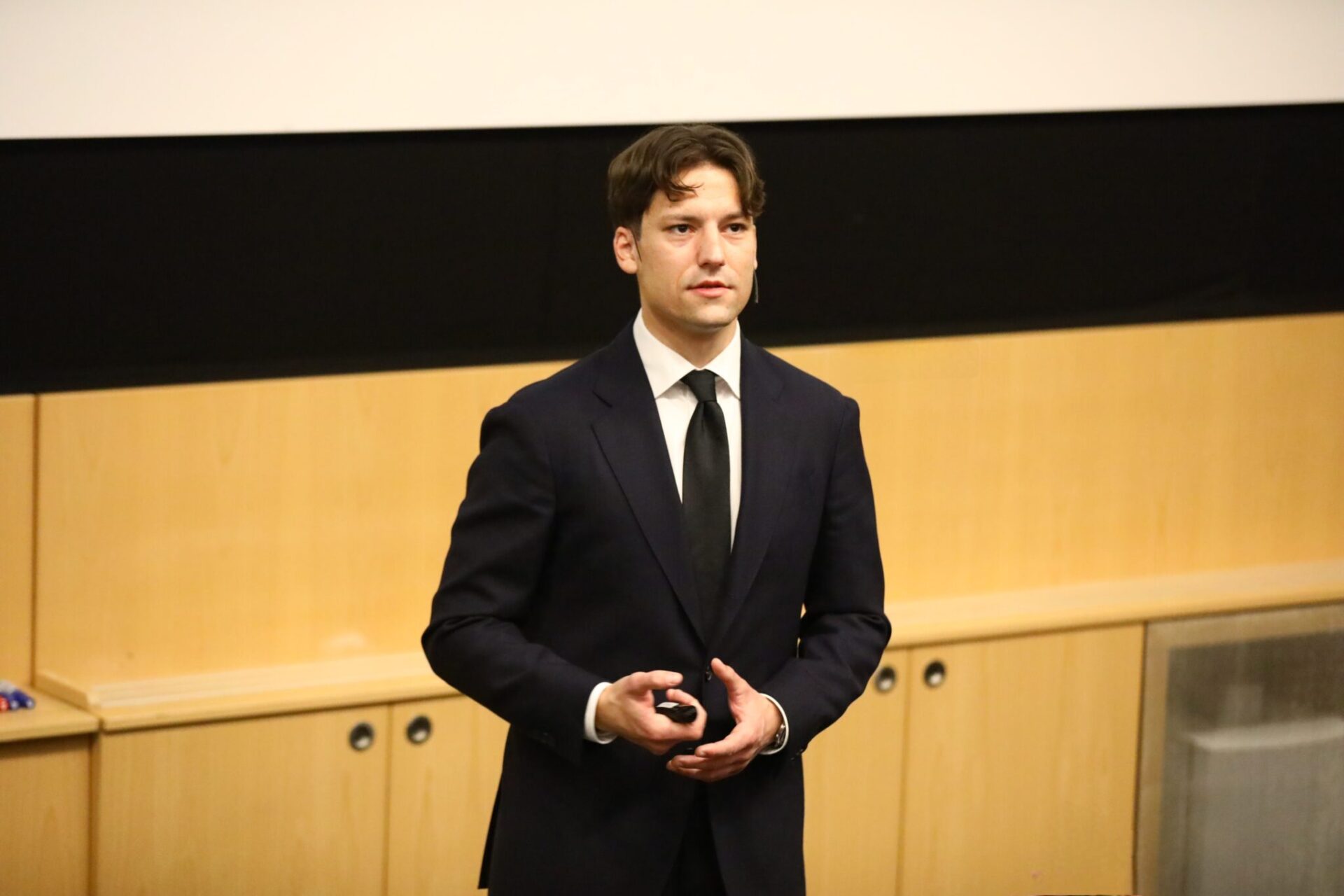Ask Pavlo Melnyk what guides his work, and he will talk about shape. In his research, it is the curved boundary of a spherical neuron that helps a model understand 3D data. In his humanitarian work, it is the outline of a hidden object that must be recognized as dangerous before anyone sets foot on a field. His days move between these shapes since 2023, when he co-founded the Demine Foundation in the UK to help eliminate land mines in Ukraine and other places around the globe. At the same time, he continues his work at Linköping University on methods that let AI reason more directly with the structure of space.
The shape of decisions
Most artificial neurons separate data using a flat boundary. In two dimensions that boundary is a line. In three, it is a plane. Collectively, these boundaries are called decision surfaces because they mark where a model changes its mind. Points on one side of the line or plane are classified one way, points on the other side another way. The shape of that decision surface affects which patterns a model can capture. Flat surfaces are simple and fast. Curved surfaces can wrap around clusters and handle trickier data.

When Pavlo, who completed his WASP PhD last year, thought of spherical decision surfaces he asked the question: what changes if an artificial neuron’s boundary is a sphere instead of a plane?
That simple shift changed what a neuron can express. A spherical decision surface lets a neuron capture rounded regions of space, so some of the nonlinearity that models usually add on later is built into the neuron itself. In practice, the model can capture richer patterns with fewer neurons or with the same number working more efficiently.
Implementing a curved decision surface can also capture symmetries in real data. LiDAR point clouds, depth scans, molecular coordinates and skeletal joints are inherently three dimensional and share common global symmetries: rotating the coordinate system doesn’t change the underlying structure, only how it’s represented. “Modeling data with neural networks in many cases benefits from symmetry-awareness,” Melnyk says, which makes spherical reasoning a natural fit.
A geometric path through the neuron
Once Pavlo changed the geometry of the smallest unit, he saw two key results: spherical neurons could be made steerable (or equivariant, i.e., symmetry-aware) and used either as a basic building block of a standalone network or as a plug-in block working with other existing methods.
These ideas come together in TetraSphere, where a compact set of steerable spherical neurons sits in the first layer of a model. A module with only a handful of parameters can guide a network of millions of parameters toward better 3D awareness. When inputs rotate or reflect, the model’s internal features transform predictably. “This is equivariance,” Pavlo explains, which supports data efficiency.
On real, randomly rotated object scans, this addition has improved performance by a couple of percentage points. The effect functions a bit like putting a pair of glasses on – it doesn’t change the overall model, but guides and sharpens its focus.

Where the ideas land
The immediate impact is in 3D vision, where recognition from LiDAR or depth sensors benefits from features that hold steady under rotations and reflections. The same principles transfer to science and engineering. In a WASP–WISE collaboration, symmetry-respecting layers are helping to predict atomic forces and energies, an essential step in catalyst discovery.
Medicine offers another natural fit. Many biological structures are geometric by nature, from proteins to human anatomy. Across these areas, the goal is consistent: greater robustness with less compute.
Closing loops
Melnyk now works as a postdoc, closing open questions and refining these “plug and play” layers so they are easier to integrate. Early results indicate that spherical neurons can be more compute-efficient without losing accuracy. Alongside his research, he teaches multidimensional signal analysis and signal processing and supervises master’s projects . Many of those projects link to industry, which gives him a clear view of real constraints and keeps his research grounded.
Humanitarian technology and community building
Pavlo comes from Ukraine. After Russia’s full-scale invasion of Ukraine in 2022, he co-founded the Demine Foundation, an international effort focused on detecting and removing landmines and unexploded ordnance. Up to a quarter of Ukraine’s land area is mine contaminated.
Sensors act as the eyes in the field, but the recognition and decisions come from AI models. Because field data is dangerous and expensive to collect, the team also builds synthetic environments to train detectors. The foundation brings together experts in explosive ordnance disposal, first aid, evacuation, avionics, cybersecurity, computer graphics and computer vision.
“It’s a humanitarian mine clearance effort,” he says, and one where geometric thinking again supports robust, efficient recognition.
Here in Sweden, Melnyk helped establish Ukrainska föreningen Östergötland. The association reflects a part of the thousand-year-long shared history between Ukraine and Sweden and preserves Ukrainian language, culture and history while supporting both long-term residents and recent arrivals. He calls it “the missing piece” of his life in Sweden, a place where Swedish and international friends can learn about Ukraine and where Ukrainians can meet, get integration assistance and build community.

Looking ahead
Pavlo’s next steps are clear: develop a stronger theoretical footing for spherical neurons, lighter steerable layers that preserve symmetry without heavy computation, and continued applications in 3D vision and materials discovery.
He wants to continue building networks that reason with the right shapes from the start, so they learn with fewer examples, behave more robustly and make decisions that better reflect the geometry of the world – this imperfect sphere we live on.
Published: October 24th, 2025
[addtoany]


